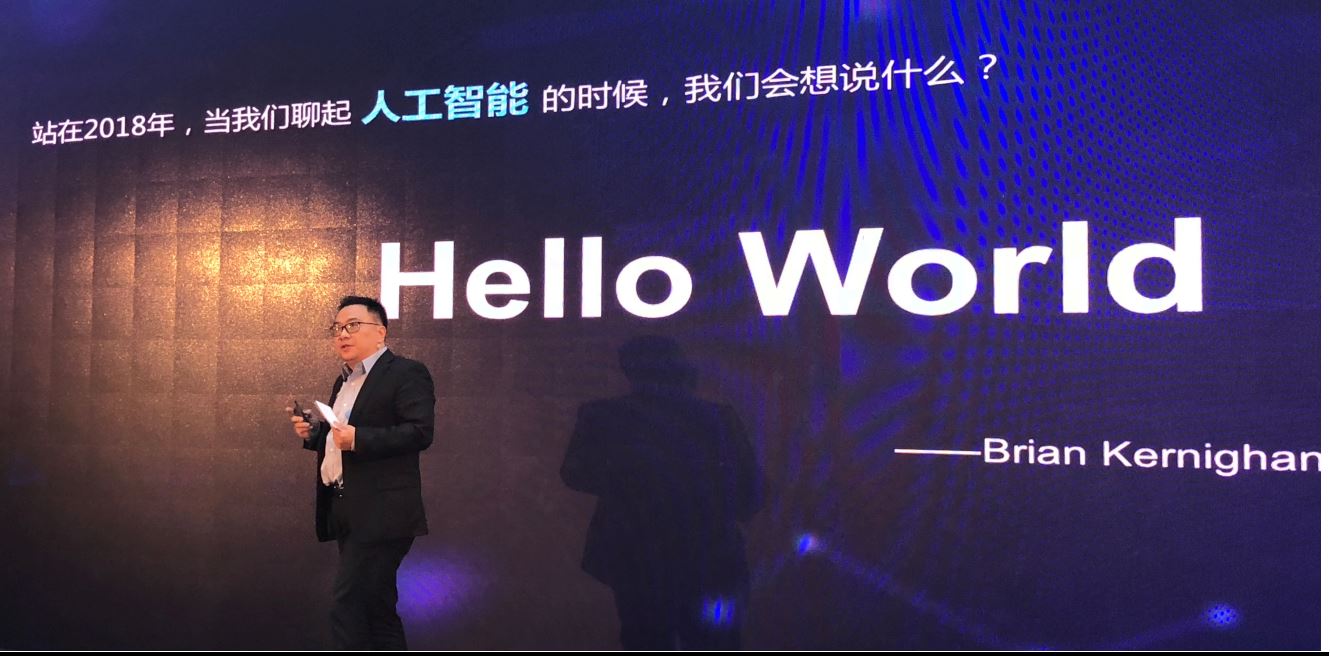JD.com AI Innovation Summit
The AI Innovation Summit hosted by JD.com in Beijing on April 15 drew top AI scientists, industry analysts, retail executives and technology professionals. Below are our key takeaways from the summit.
1. JD.com Announced Its AI Strategy and NeuHub Open AI Platform
JD.com has been at the forefront of AI research and application in China. Bowen Zhou, JD.com’s VP of AI Platform and Research, said that the company is building an AI ecosystem with three key components: the NeuHub open platform for technology collaboration, a team dedicated to AI-driven business-model innovation that facilitates industry partnerships and an AI research institute focusing on partnerships with fundamental researchers from academia. The company seeks to facilitate continuous dialog and collaboration among researchers and industry professionals with the end goal of applying AI technology to various industry verticals.
At the center of JD.com’s AI ecosystem is the NeuHub open platform for technology professionals. The platform serves industry verticals such as fintech, logistics, retail, supply chain and healthcare. Of the three key components of the new AI ecosystem, NeuHub will be responsible for more than 80% of innovation ideas and projects, Zhou said.
2. JD.com Has Partnered with Fung Retailing to Power a Better In-Store Customer Experience
In February 2018, JD.com and Fung Retailing signed an agreement to partner on the development of AI-driven retail solutions. The two companies will collaborate in areas such as AI platform development and AI smart retail technologies. The agreement will enable the companies to develop new retail formats for China and Asia by combining JD.com’s extensive online expertise with Fung Retailing’s offline expertise.
Scientists from JD.com described at the summit how AI technology can help offline stores better understand store traffic, customer demographics and product assortment. For example, in-store cameras powered by computer vision can capture customer base information that can be analyzed in order to optimize store assortment. Tao Mei, JD.com’s Director of Computer Vision and Multimedia Lab, said that computer vision can help retail stores provide better customer service and better target customers with relevant marketing messages.
3. Chatbots Can Now Detect Sentiment in Conversations with Customers
The newest frontier of conversational commerce is enabling chatbots to converse with human-like sentiment. JD.com’s latest chatbot, Jimi, is able to detect the sentiment behind customers’ inquiries and produce appropriate responses that are similar to those provided by the best-trained customer service professionals. For example, Jimi can detect the frustration level of a customer inquiring about a lost package and respond with an apology and a solution to the problem. The sentiment-analysis technology can also be applied to image processing, enabling the chatbot to understand customers’ social media postings and provide appropriate comments. For instance, the chatbot could provide advice or commentary on an outfit pictured in a social media post, just like the poster’s friends might.
AI-powered chatbots already handle more than 90% of inbound customer service inquiries on JD.com’s commerce platforms. During the 11.11 Global Shopping Festival (the Singles’ Day shopping event), the Jimi chatbot handled nine out of 10 customer inquiries on JD.com’s site. The system has access to information on more than 1 billion products.
4. JD.com Announced the Creation of an AI-Focused Startup Accelerator
At the summit, JD.com announced its new accelerator, which focuses on nurturing AI startups. The accelerator will select 10–15 startups from across the globe and provide them with starting capital while also facilitating strategic partnerships for them. JD.com’s investment team is also actively looking for acquisition opportunities in the AI space.
5. AI Is Experiencing a Breakthrough in Fundamental Learning Capabilities
Bowen Zhou, JD.com’s VP of AI Platform and Research, shared his insights on the current development of AI technology. He said that 2017 was a pivotal year for AI learning ability advancement and that AI now works 100 times faster than in the past, thanks to significant improvements in efficiency and problem-solving capability. Traditional AI technology has limited memory of tasks and is not able to connect different tasks in the same way that humans can. Future AI technology will have more autonomy in terms of learning, with less need for human inputs. In the near future, AI should be able to learn and perform multiple tasks without learning signals, functioning similarly to how humans process information and play back information during sleep.
 Bowen Zhou, JD.com’s VP of AI Platform and Research
Source: Coresight Research
Bowen Zhou, JD.com’s VP of AI Platform and Research
Source: Coresight Research
6. Limited Talent Pool Is a Key Bottleneck for AI Development
A shortage of AI talent is a key factor limiting the development of the technology, said Zhi-Hua Zhou, Head of the Department of Computer Science and Technology at Nanjing University. AI technology demands minimal investment in hardware, as the sharing economy has produced a large amount of data that is available to train AI systems, but the AI talent shortage has prompted large corporations to raise salaries in order to compete for qualified scientists. Such moves may alleviate companies’ immediate staffing needs, but they do not address the fundamental talent shortage that could slow down AI technology development.


 Bowen Zhou, JD.com’s VP of AI Platform and Research
Source: Coresight Research
Bowen Zhou, JD.com’s VP of AI Platform and Research
Source: Coresight Research